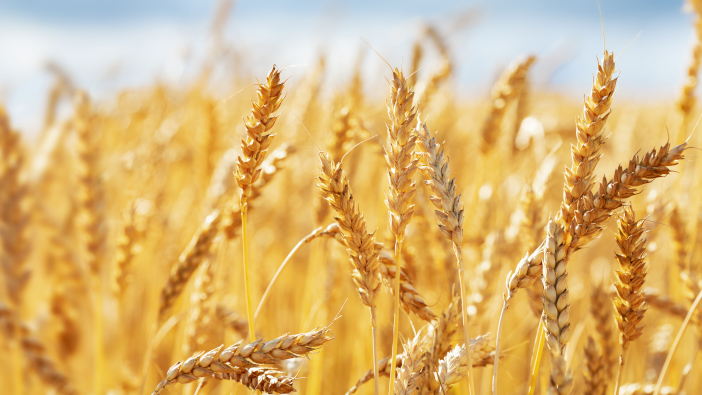Jonathan Lane, ADM Agriculture’s head of grain trading, comments on the wheat market
Markets have firmed on the week despite a bearish slant to the USDA report, although continued concerns over global inflation and optimism over Black Sea exports have limited the gains.
Chicago Dec 22 futures edged up $2.30/t, Matif rose by €17.75/t ($15.48/t) for the same month while London Nov 22 futures increased by £15.30/t ($19.30/t).
USDA raised 2022/23 US ending stocks in Tuesday’s report, due to an increase in production. It also increased global inventories when most were expecting a monthly decline.
US consumer price index data is expected to show higher inflation in the country, which could force the central bank to increase interest rates.
Russia and Ukraine have apparently reached a deal that would open up ‘sea-bound’ export corridors, with plans for Ukrainian vessels to guide ships in and out of mined port waters. In addition, Russia would be urged to respect a truce while shipments move, and Turkey, supported by the UN, would offer to inspect ships to allay Russian fears over weapon smuggling.
In the meantime, Ukraine’s Grain Association has raised its 2022 corn and wheat harvest forecast to 27.3 mln t and 20.8 mln t respectively.
Romania has re-opened a ‘pre-soviet era’ railway link connecting its Danube river port of Galati to Ukraine a month earlier than expected to help boost vital grain exports.
Farmers in Russia’s southern Rostov region are seeing high wheat yields as harvesting gets underway, and expectations are for a repeat of last year’s record crop.
European output has been revised down. Strategie Grains has trimmed its 2022/23 EU soft wheat forecast to 123.3 mln t, down 1.1 mln on last month’s estimate and 6.6 mln lower than last year. It stated ‘a delicate equilibrium forecast for EU market in 22/23 with smaller harvests and sustained exports’.
In its initial forecast, France’s Agriculture ministry has placed soft wheat production at 32.9 mln t, down 8% year on year, with yields estimated at 6.99t/ha due to rainfall deficits, heat and storm damage.
Canadian crops are advancing rapidly amid warmer weather, although sodden fields are seen restricting spray applications forcing some to switch to aerial spraying.
Buenos Aires Grain Exchange has again trimmed Argentina’s wheat area forecast, to 6.2 mln ha, down 0.5mln ha compared with last year, with sowings placed at 85% complete.
The current UK heatwave is rapidly bringing wheat crops to maturity, although concerns are increasing about the potential impact on yield and quality if the current weather continues.

Will Ringrose, ADM Agriculture’s head of oilseeds, comments on the OSR market
The trade has focused on USDA’s July world supply and demand estimates, leading Chicago soybeans to trade sharply lower into the close following the report.
Whilst US soybean ending stocks were estimated higher for 2021/22, they were lower for 2022/23. USDA kept 2022/23 yields the same, but the recently reported fall in the current area pushed production lower. More importantly, world-ending stocks were reported above expectations for 2021/22 at 88.73 mln t, but unchanged on 2022/23.
Scattered showers across the Midwest will help crops, but it’s now looking warm and dry for most areas for the next few weeks, which may see the trade add some risk premium back into prices. Crop ratings fell again this week from 63% good/excellent down to 62%.
In South America, USDA left the production for Brazil unchanged at 126 mln t and increased production in Argentina from 43.4 mln t to 44 mln t.
In China, a rise in Covid-19 cases in Shanghai caused more lockdown concerns. Businesses are still unable to reopen and port congestion is building, which may cause further disruption. Chinese demand has dipped sharply recently, with no US soybeans purchased for over six weeks.
Oil markets all ended lower again this week. Crude oil fell 8% earlier in the week on fears of recession and falling demand. West Texas Intermediate closed below $96/barrel yesterday for the first time in three months.
This, plus rumours that President Putin will turn off Europe’s gas supply this month, coupled with high US inflation and ongoing Chinese Covid-19 cases, was enough for a sell-off.
The Malaysian palm oil board estimated June palm yields at 0.25mt/ha higher than expected. As predicted, USDA reduced veg-oil demand given recent global events, increasing world-ending stocks for 22/23. Veg oils have traded sharply lower since.
MATIF and Canadian canola futures both lowered on the week. There may be concerns in some areas of Canada over the lack of rainfall, which will be closely watched over the coming weeks. MATIF rapeseed followed the complex lower to trade at the lower end of its recent range.
The EU harvest has started and seed supply looks ample for the next few months, which may pressure prices.


